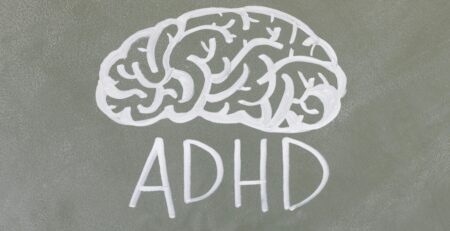DBT for Adolescents: Adapting Dialectical Behavior Therapy for Teen Mental Health
Dialectical Behavior Therapy (DBT) is a well-established therapeutic approach designed to help individuals manage emotions, cope with stress, and improve interpersonal relationships. Originally developed by Dr. Marsha Linehan for treating borderline personality disorder (BPD), DBT has evolved to address the unique needs of various populations, including adolescents. This blog explores how DBT is adapted for teens, its benefits, and practical considerations for effective implementation.
Understanding Dialectical Behavior Therapy
Dialectical Behavior Therapy combines cognitive-behavioral techniques with mindfulness and acceptance strategies. The therapy is grounded in the concept of dialectics—balancing opposing forces. In DBT, this means integrating acceptance and change strategies. The therapy is structured around four key components:
- Mindfulness: Enhancing the ability to stay present and aware of one’s thoughts, feelings, and surroundings.
- Distress Tolerance: Developing skills to tolerate and survive crises without making things worse.
- Emotion Regulation: Learning to manage and change intense emotions that are causing problems.
- Interpersonal Effectiveness: Improving communication and relationships with others.
Why DBT is Effective for Adolescents
Adolescence is a period marked by significant emotional, cognitive, and social development. Teens face unique challenges such as identity formation, peer pressure, and academic stress. These challenges can exacerbate mental health issues and contribute to emotional dysregulation. DBT’s focus on mindfulness and emotion regulation makes it particularly effective for adolescents.
1. Addressing Emotional Dysregulation
Teenagers often experience intense and fluctuating emotions. DBT provides tools to help them understand and manage these emotions. Skills learned in DBT can help adolescents cope with overwhelming feelings and reduce self-destructive behaviors. For example, distress tolerance skills can help teens navigate crises without resorting to harmful behaviors, such as substance abuse or self-harm.
2. Enhancing Communication Skills
Interpersonal effectiveness is crucial for adolescents who are navigating complex social dynamics. DBT teaches teens how to assert their needs, set boundaries, and maintain healthy relationships. This can be particularly beneficial for those struggling with social anxiety, peer conflicts, or family issues. By improving communication skills, teens can build more supportive and positive relationships with peers and family members.
3. Promoting Mindfulness
Mindfulness helps teens become more aware of their thoughts and feelings without judgment. This can be especially valuable for adolescents who are experiencing heightened stress or anxiety. Mindfulness practices in DBT can help teens stay grounded and make more informed decisions, rather than reacting impulsively to their emotions.
Adapting DBT for Adolescents
While DBT is effective for adolescents, it must be tailored to meet their developmental needs. Here are some strategies for adapting DBT for a younger audience:
1. Simplify the Language
Teens may struggle with complex therapeutic jargon. Therapists should use age-appropriate language and concrete examples to explain DBT concepts. Engaging adolescents with relatable scenarios can help them better understand and apply the skills they are learning.
2. Incorporate Interactive Elements
Adolescents benefit from interactive and engaging activities. Incorporating role-playing, group discussions, and creative exercises can make DBT more accessible and enjoyable for teens. These activities also provide opportunities for practicing skills in a supportive environment.
3. Engage the Family
Family involvement can enhance the effectiveness of DBT for adolescents. Involving parents or guardians in therapy can provide additional support and help address family dynamics that may contribute to the teen’s mental health challenges. Family sessions can focus on improving communication, setting boundaries, and fostering a supportive home environment.
4. Adapt the Structure
The traditional DBT program is structured around weekly individual therapy sessions and group skills training. For adolescents, it may be beneficial to incorporate additional support mechanisms, such as school-based interventions or community resources. Flexibility in the therapy structure can help accommodate the unique schedules and needs of teenagers.
Benefits of DBT for Adolescents
The benefits of DBT for adolescents are extensive and can lead to significant improvements in mental health and overall well-being. Some key benefits include:
- Reduced Self-Harm and Risky Behaviors: DBT’s focus on distress tolerance and emotion regulation helps reduce self-destructive behaviors and impulsivity.
- Improved Emotional Regulation: Teens learn to manage their emotions more effectively, leading to greater emotional stability and resilience.
- Enhanced Relationship Skills: DBT improves communication and interpersonal skills, fostering healthier relationships with peers and family members.
- Increased Self-Awareness: Mindfulness practices help teens develop greater self-awareness and insight into their thoughts and feelings.
Conclusion
Dialectical Behavior Therapy offers a valuable approach for addressing the mental health needs of adolescents. By adapting DBT to meet the developmental needs of teens, therapists can provide effective support for managing emotions, improving relationships, and enhancing overall well-being. The structured yet flexible nature of DBT makes it a powerful tool for helping adolescents navigate the complexities of this pivotal life stage.
If you’re considering DBT for an adolescent, working with a therapist experienced in adolescent mental health can ensure that the therapy is tailored to meet their specific needs. With the right support and adaptation, DBT can make a meaningful difference in the lives of teenagers struggling with emotional and behavioral challenges.




Leave a Reply